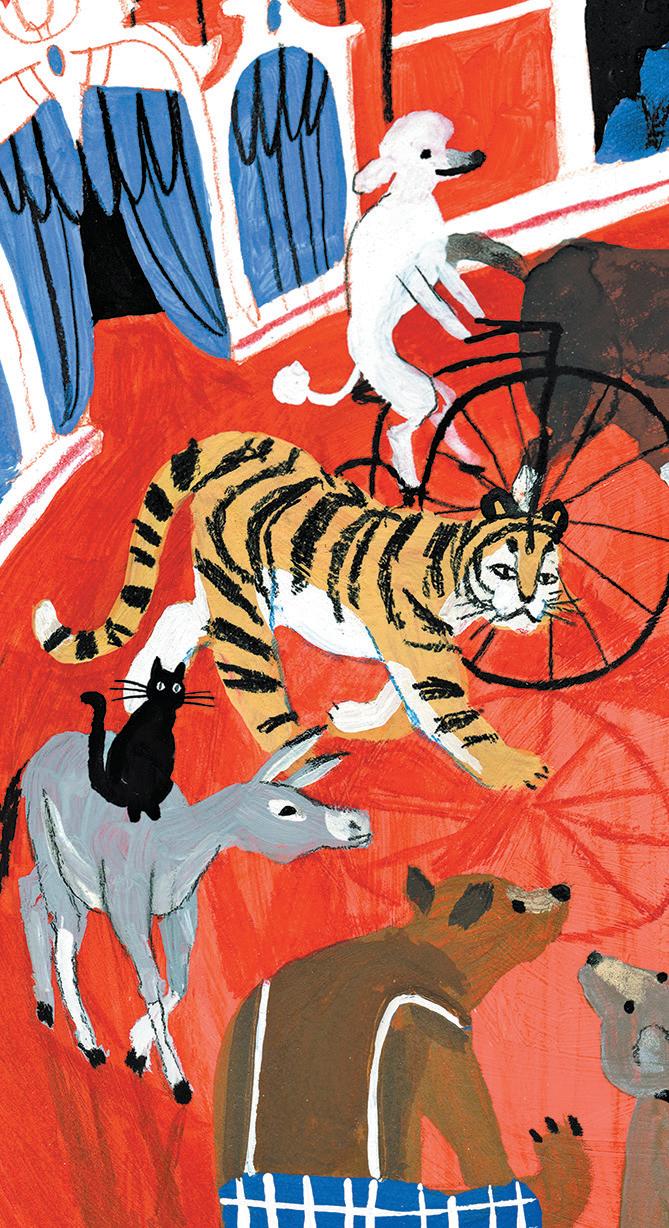
5 minute read
Russian With Style
JULIA SIDNEVA

Advertisement
"It was because of
the big influence
of the Polish
illustration school
that I finally found
the way I want to
develop my style. "
When did you first think about art as something you wanted to do? Were you encouraged or discouraged by family, friends, teachers?
It is difficult to answer this question precisely, it seems that this idea was with me from birth. My most favorite children's entertainment is to be alone with papers and pencils. My Parents immediately appreciated this state of affairs, because I could entertain myself for hours on my own (laughs). And then everything is simple: every year I grew and changed, but my love for drawing remained unchanged, so neither I nor my family had any options. And it's silly not +to do your favorite thing and do something else.



What kind of kid were you? Where did you grow up? What were your influences?
I grew up in Soviet Moscow in a normal quiet apartment area. I dreamed a lot, I thought that someone was living under the bed, I was bored at school. And for the whole summer I was sent to my grandmother in the village and there my favorite place was a huge pile of building sand in front of the house. It was possible to build entire cities and highways.


I painted all the time, I made up small plots, ironic scenes, for a long time I wanted to become a multiplier. When it became clear that being a professional artist was inevitable, my parents sent me to art school. Most of all I was interested in the image of any living beings, their characters, dynamics. I remember well a still life with a stuffed crow, which almost no one could do, but I was delighted. My classmates asked me to help when the teacher left the classroom. I could not refuse them, and instead of drawing one crow, I drew a 5 or 6!

But a really big influence on me was the education at Moscow University of Press. It was a time of real discovery! Elena Nenastina has become my main teacher, with whom I was already a wonderful friend.

Has the computer affected your work? Do you work traditionally and digitally?
Of course! I draw pictures on paper, but always modify them in graphic editors. Sometimes it's hard to see. First of all, I make the image clean, bright, remove unwanted garbage: random lines, splashes. A few years ago, I stopped at this. Now I increasingly combine drawing with computer graphics, it helps to achieve original effects and textures.
You do a lot of whimsical art. How did that happen?
I don't think that I do whimsical art. But I am primarily interested in character, emotion, moments. Always loved to watch different types of personality and explore their characters. That is why I often make sketches of the life of my city on the street or in transport - this is the greatest pleasure and entertainment for me. This is my personal library of characters! I think the plot is secondary, so all the attention in my illustrations is directed to the characters, and the environment and interiors are very conditional, without details.

Still important to me is the composition of the image. This is primarily an analytical work. I love the combination of emotionality and analytics in illustration and I try to work actively in these two areas.

I show a lot of my work at Russian and international exhibitions, sometimes I participate in markets, I show city sketches in social networks. Sometimes I have individual exhibitions in Russia. I always have a job here, but I haven’t cooperated with foreign publishers yet, but I would really like it. I think this is the next step in my professional development.
What’s the future hold for you? Any ultimate goal?
Everything is very simple. I would like to grow to the world-famous illustrator!
Your style is very unique. Did you work on developing a style or is that what naturally came out of you?
Undoubtedly, my style was influenced by 6 years of study at the Moscow State University of Press named after Ivan Fedorov, founded in 1930. The University emerged from a creative professional association that can be considered the first largescale design workshop in Russia. The ideas were close to the principles of the German Bauhaus school. The first teachers of the graphic faculty were the famous graphics of the Soviet Union, and the first dean was Alexander Rodchenko. I was lucky to learn from teachers who were students of the most progressive

theorists and practitioners of illustration in the USSR. This is a powerful composition base. This is the development of expressive images. This is a great foundation for an illustrator. I am proud of my school.At the same time, the tradition of Soviet graphics is very strong at the university of print, naturally this reflects on the drawing style of students and graduates. Therefore, several years after university, I wanted to make my drawings more modern and relevant. I am working on it so far, I try to study modern world illustration, I watch a lot of my Western colleagues. I want my style to remain recognizable, but at the same time I change a little bit all the time. I think it is very important to discover something new all the time and respond to the demands of modernity without changing yourself.




